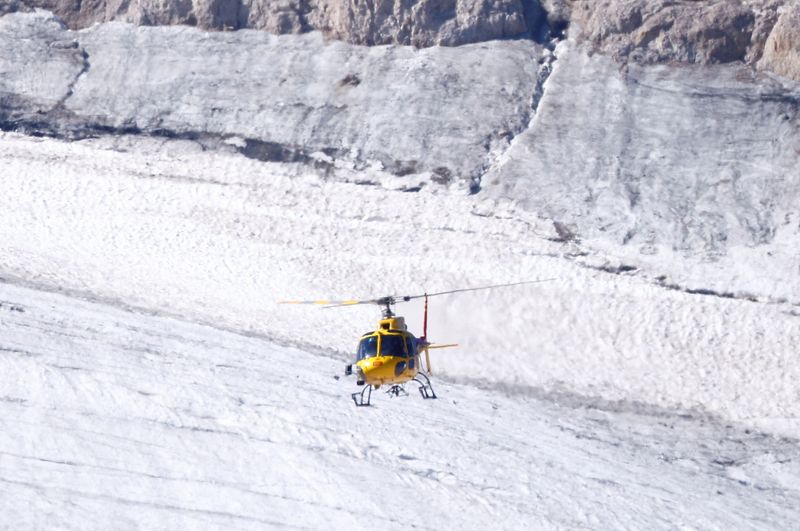Italians seek to identify victims of glacier collapse
2022.07.06 15:31

A helicopter participates in a search and rescue operation over the site of a deadly collapse of parts of a mountain glacier in the Italian Alps amid record temperatures, at Marmolada ridge, Italy July 6, 2022. REUTERS/Guglielmo Mangiapane ?
By Guglielmo Mangiapane and Roberto Mignucci
CANAZEI, Italy (Reuters) – Italian authorities sought on Wednesday to find the remaining victims of the glacier collapse in the Alps that is feared to have killed 12 people and is being blamed on rising temperatures.
“The drones are flying over the avalanche surface in the hopes that the melting ice will allow us to find something on the surface,” said Maurizio Dellantonio, president of the local Trentino Alpine Rescue team.
“It is very important for us to find even the smallest object in order to ensure that we can find out what happened, or to try to understand what happened,” Dellantonio said.
“This would also give an answer to all the relatives who today are still anxiously waiting for news about their relatives,” he added.
A police team specialised in DNA analysis has also been drafted in to help with the identification process.
At least seven people are confirmed to have been killed in the avalanche on Sunday on the Marmolada, which at more than 3,300 metres (10,830 feet) is the highest peak in the Dolomites, a range in the eastern Italian Alps straddling the regions of Trento and Veneto.
The confirmed victims include two climbers from the Czech Republic, Italian media reported.
Another five people, all Italian, remain unaccounted for and are feared dead.
Much of Italy has been baking in an early-summer heatwave and scientists said climate change was making previously stable glaciers more unpredictable.
Rescue coordinators said a layer of dust and debris was limiting the effectiveness of drone searches and they hoped to send a team of experts and search dogs to the lower part of the site on Thursday, when the weather is forecast to be clearer.
Parts of the area are shut off to tourists to allow rescue teams to operate and prevent climbers from accessing potentially dangerous areas.








